Deciding to take the leap towards a total overhaul of your website design can be a daunting proposition. Between conceptualizing a vision, getting your team on board with that vision, and communicating said vision with whoever will be handling the redesign, there is a great deal of planning, organization, and cooperation involved in the process.
As any business owner knows, the more complex an undertaking, the greater the potential for the entire project to go haywire. However, as any savvy business owner also knows, a bit of extra preparation before taking on a massive project can be the difference that prevents any “hiccups” along the way.
What’s the best way to prepare for a website redesign? By asking the right questions! In the spirit of inquisitiveness, we asked 21 professionals from across the country to share their number one question to ask before redesigning your website.
 “Is this is a rebrand or just a new website?”
“Is this is a rebrand or just a new website?”
Companies often decide to update logos and other brand identity assets at the same time as updating their website. It’s well worth considering the scope of the project in this regard – are you just looking to update the website itself? Or is it time to properly refresh the brand?
Ben Taylor, Founder of HomeWorkingClub.com
 “Does my website offer flexibility for growth and future expansion?”
“Does my website offer flexibility for growth and future expansion?”
Having a website that can be scalable to over time is important. As your business grows and expands, you will need to make sure your website is flexible enough to handle a variety of features and functionality.
Jill Caren, Owner of 2 Dogs Media LLC
 “Straight to the point – what am I selling?”
“Straight to the point – what am I selling?”
With the ever decreasing attention span, clarity should be the main focus of your newly redesigned website. If a visitor can’t tell what you are trying to sell and why within the first five seconds, declutter your website.
Pay special attention to the top area known as above the fold (the visible content without scrolling). Include a strong, call-to-action to convert the visitor into a potential customer.
Jimmy Chan, Photographer of Pixelicious
 “Who will be visiting the site?”
“Who will be visiting the site?”
One of the best ways to answer this question is to develop user personas before designing your website. If you partner with a web designer, this is something they should be doing. Personas give backgrounds and biographies to your top three or four ideal users. It gives you the chance to really get to know your users, their wants, and their expectations.
Keri Lindenmuth, Marketing Manager of KDG
 “How can I use this new website as a tool for my company?”
“How can I use this new website as a tool for my company?”
While any redesigned website should certainly look good, it’s most important that the website functions as a legitimate tool that can help your business grow. Your website should work to draw in qualified leads and help convert those leads into prospects and potential customers. When you spend money on a website redesign that actually works to draw in business for you, the ROI is much greater than an investment in a website that just looks good.
Mackenzie Deater, Content Strategist at HA Digital Marketing
 “What is my brand voice, and more importantly, what is my brand message?”
“What is my brand voice, and more importantly, what is my brand message?”
Your brand voice, made up by the copy on your website, should be a real, human voice with a personality that embodies your brand. Your brand message is “higher-purpose” of your mission, which should strike a chord with your target audience. Finding your brand voice and your brand message will allow you to speak naturally to your target to form relationships and inspire action.
Mikaela Delia, Freelance Copywriter
 “What’s in it for my audience?”
“What’s in it for my audience?”
Often times, people build their websites in a very self/company-centered way. We must remember when offering solutions for people to purchase (solving people’s problems), it’s not about us—it’s about the audience. So, the website must make it easy for people to see how you or your company will improve their lives.
Chrissy Bernal, Perceptions Analyst
 “How competitive do we want to be, and where?”
“How competitive do we want to be, and where?”
Is your website going to live in a crowded, highly contested, SEO-driven, international marketplace? Or is your business model in a small, more rural area serving mainly regional customers? Globally competitive websites, such as a South Florida 5-star resort, are a completely different online competition than say a 2-3 location florist shop in central Kansas.
Baron Christopher Hanson, Lead Consultant & Owner of RedBaron USA
 “How will my site generate leads?”
“How will my site generate leads?”
In your redesign, it’s important that your content and CTAs are converting visitors into your lead funnel (products, information, customer service). This is the aspect of your website that will drive users and encourage action, so it’s important to pay attention to the customer journey on your site and make sure that it’s intuitive and seamless for users.
Lizzie Dunn, Content Associate at Fundera.com
 “What are my business objectives?”
“What are my business objectives?”
Without clarity on business objectives, a website will not be able to reflect the mission, vision, and goals of the business. That is more like shooting in the dark, without any goal. In fact, this is the MOST important aspect of a website design, which, many businesses ignore.
Shashank Shalabh, CEO & CMO of Omnidigit
 “How will my website meet people where they are?”
“How will my website meet people where they are?”
A successful website makes it easy to be a customer by providing obvious next steps that we’re comfortable with. The comfortable part is key. Not everyone is ready to buy when they visit – some people just want to see if you’re credible. Some people do want to buy, but the timing isn’t right. Some people want more information to share with their team. With an understanding of why people are visiting your website, design your website around the top 2-3 ways for people to engage at varying degrees of commitment.
Clayton Fuller, Strategist at studiofreight.com
 “How will this affect my SEO?”
“How will this affect my SEO?”
For most websites, organic traffic accounts for a substantial portion of their traffic. The last thing you want is for a website update to negatively impact your position in the search engine results pages. There are steps you can take to mitigate the risk of any adverse effects, but you need to plan for this upfront during the redesign process.
Stephen Jeske, Content Strategist at MarketMuse
 “Am I breaking what I had?”
“Am I breaking what I had?”
Design changes often come along with the website structure change. Here, you need to careful with existing backlinks from other sites and internal linking. If a high authority website linked to one of your pages, you need to be sure that the URL of that page remains active and the content doesn’t change dramatically. Same with internal links. If you had them well-thought, be careful not to break the logic when changing the structure of the site.
Kevin Begola, Owner of Titanium-Buzz
 “What resources can I bring to this new site?”
“What resources can I bring to this new site?”
Do you have case studies to showcase? What about authority-building articles? Or, do you prefer to put testimonials front and center? The resources you have to back your product will affect your website’s design.
Reuben Yonatan, Founder and CEO of GetVOIP
 “Who are my competitors?”
“Who are my competitors?”
What do I like about their website? What don’t I like about their website? What works and what doesn’t? How am I different from them? This will help you set yourself apart and get ahead of competitors.
Samuel Tang, Designer and Gemologist at Joy Creations
 “Can my customers or audience easily find what they are looking for?”
“Can my customers or audience easily find what they are looking for?”
Your website is a tool to connect your customers to what you are offering. If the setup, layout, or content is not providing them immediate and quick access to what they need, you should make changes to improve this. The more time a potential lead or existing customer spends rummaging around on your website to find what they need, the less likely they are to feel satisfied with your business.
Jared Weitz, CEO/Founder of United Capital Source Inc.
 “What are my SMART (Specific, Measurable, Attainable, Relevant and Timely) goals for the site?”
“What are my SMART (Specific, Measurable, Attainable, Relevant and Timely) goals for the site?”
Before you even begin to redesign the site, you’ll want to establish SMART business goals. This includes determining which metrics (i.e., downloads, registrations, etc.) to measure. These metrics serve as the guide to create a design and user experience that makes it easier to hit those goals.
Kyle Strahl, Creative Director & Owner of KEYLAY Design
 “What do I like and dislike about my current website?”
“What do I like and dislike about my current website?”
Putting together a list of the likes and dislikes of your current site will help you to be more clear about what it is that you’re looking for in the redesign. Whether you’re redesigning the site on your own or hiring an expert, make sure to decide on which aesthetics, language, and functionality appeals to you and your brand the most so that this can be transferred over in the redesign.
Brianna Brannan, Owner of Digital Nomad Designs
 “What’s the primary goal of every single page on your site?”
“What’s the primary goal of every single page on your site?”
You need to align everything including design, UX, CRO, and even SEO for each page. If a page isn’t serving a purpose, then it needs to be axed. That’s when a content audit comes into play. In essence, analyze each page on your site and determine whether it’s worth improving, consolidating and redirecting, or deleting. For example, if a page is thin (less than 400 words), doesn’t have traffic, isn’t getting leads, and doesn’t have backlinks then it’s a candidate for deletion or redirection.
Nathan Gotch, Founder of Gotch SEO
 “Have my sales or traffic goals changed since the last time my site was designed?”
“Have my sales or traffic goals changed since the last time my site was designed?”
For ecommerce businesses, sales goals are directly related to the user experience on your site. Redesign goes hand in hand with your business goals – make sure your website is optimally designed to give you the best shot at reaching those goals.
Jackie Minchillo, Co-Founder and President of Pineapple Development
 “How can I contain the cost of building of a new website?”
“How can I contain the cost of building of a new website?”
When building a website, you have two choices: design a bespoke site or take a templated approach. Most businesses use a premium template (also called a ‘theme’) because it’s a far more cost-effective option. However, understand that there are thousands of themes available to choose from. Be sure to select a theme that satisfies 80 percent (or more) of your needs as this will limit the amount of coding required, which will also control the time and cost.
Jacqueline (Jaci) Burns, Chief Marketing Officer of Market Expertise
Any More Questions?
We know a website redesign can be quite an intimidating task. Whether you’re taking a DIY approach or hiring professional website designers to handle it for you, there’s no such thing as asking too many questions before diving headfirst into overhauling your business’ website. Chat with a member of our team to get your burning questions answered before redesigning your wesbite.
Has your business undergone a website redesign before? Which question was most helpful when navigating the redesign process? Which question(s) do you wish you had asked before getting started? Sound off in the comments!




